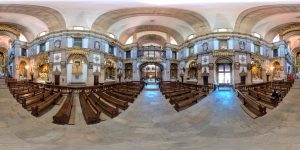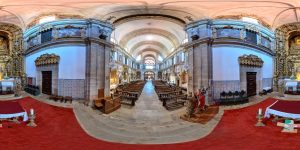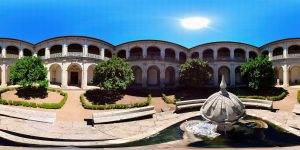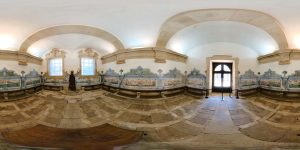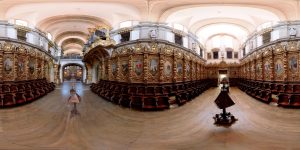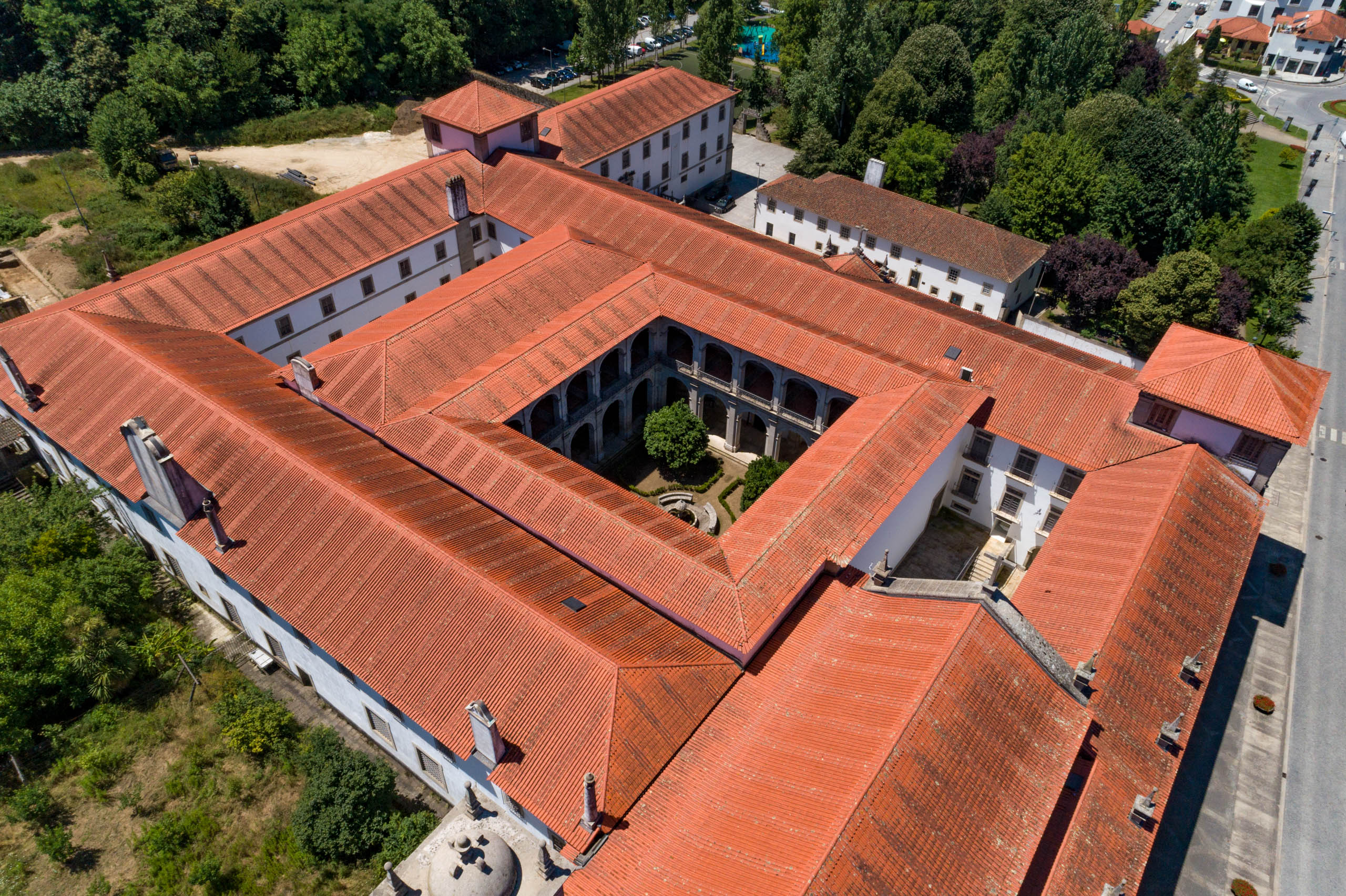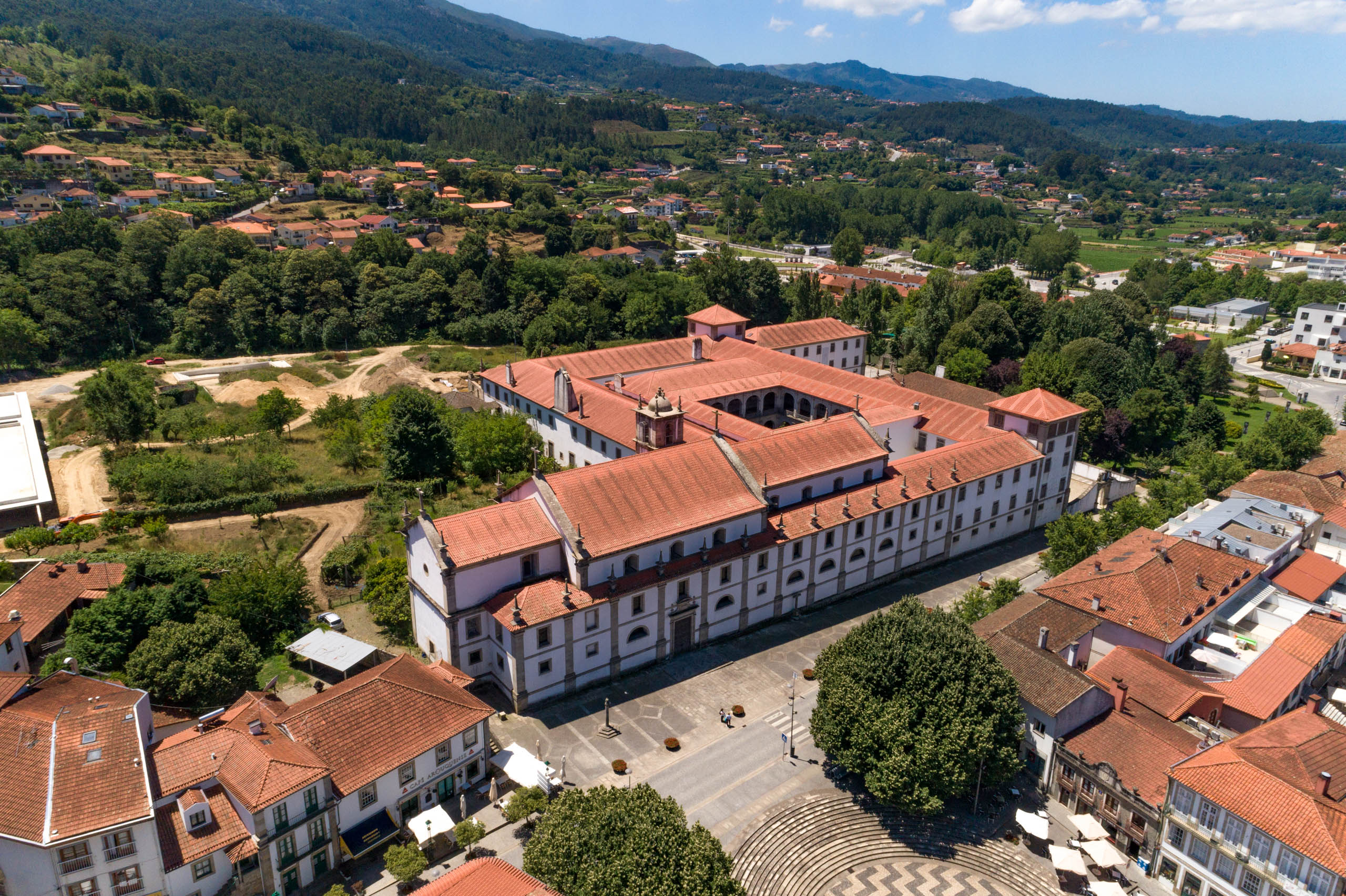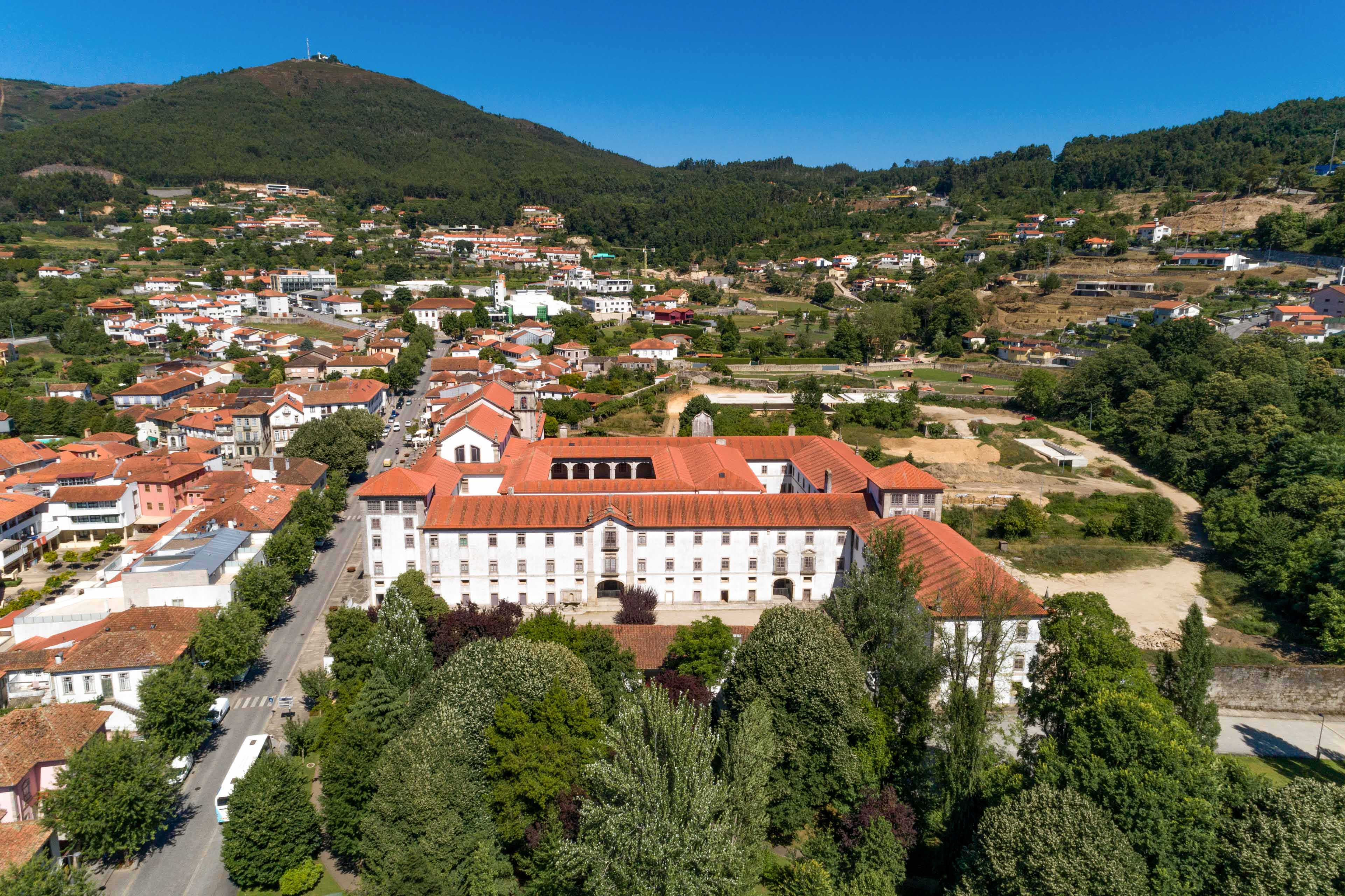History Monastery and Museum of Sacred Art
To visit the Monastery of Arouca is to get to know a very significant part of the history of this territory, as well as many of the social dynamics that it still retains today. Founded before nationality itself, this monastery stands in the heart of the Arouca Valley, one of the most fertile in the region. Since the 10th century, several pages of Portuguese history have been written here, especially after the entry and tutelage of D. Mafalda, daughter of King Sancho I and granddaughter of Afonso Henriques, Portugal’s first king.
The current monastic building dates back to the 17th/18th centuries and houses a very rich Museum of Sacred Art, whose visit includes the monastery’s internal spaces, such as the Cloisters, the Kitchen and the Chapter Room, where we find testimonies of history through painting, sculpture, goldsmithery, furniture and various religious objects. Since 1933, the people of Arouca, giving life to the Royal Brotherhood of Queen Santa Mafalda, have managed to preserve the valuable collection that we can appreciate today, as well as the grandeur of the building itself and its rich interior decoration. This monument is part of the Iter Hominis Historical Center route.
Contacts
Timetable
| Period | Opening | Last Entry | |
|---|---|---|---|
| Tuesday to Sunday | 10:00h | 12:30h | 13:00h |
| 14:00h | 17:00h | 17:30h |
Closing
Monday and public holidays
Formulário de contacto associados
Educational Visit
The ancient Monastery of Arouca, founded between 915 and 925, is the largest granite monument in Portugal. Its construction in a fertile valley with abundant water led to the development of the entire region, which grew up around it. With an active role in the Christian reconquest, in 1226, under the influence of D. Mafalda, granddaughter of D. Afonso Henriques, the Monastery adopted the Cistercian Order and became the most important and powerful Portuguese female monastery. The current configuration and part of the Monastery of Arouca dates from the 17th and 18th centuries, in Baroque style. During the guided tours of this National Monument, you can discover monastic spaces such as the Cloister, the Kitchen, the Chapter Room, the Nuns’ Choir and one of the most valuable collections of Sacred Art, exhibited in its old dormitories. An invitation to a unique journey of discovery through 10 centuries of history!
Educational Visits
08 – Stories of a Monastery with more than 10 centuries
Sustainable Development Goals



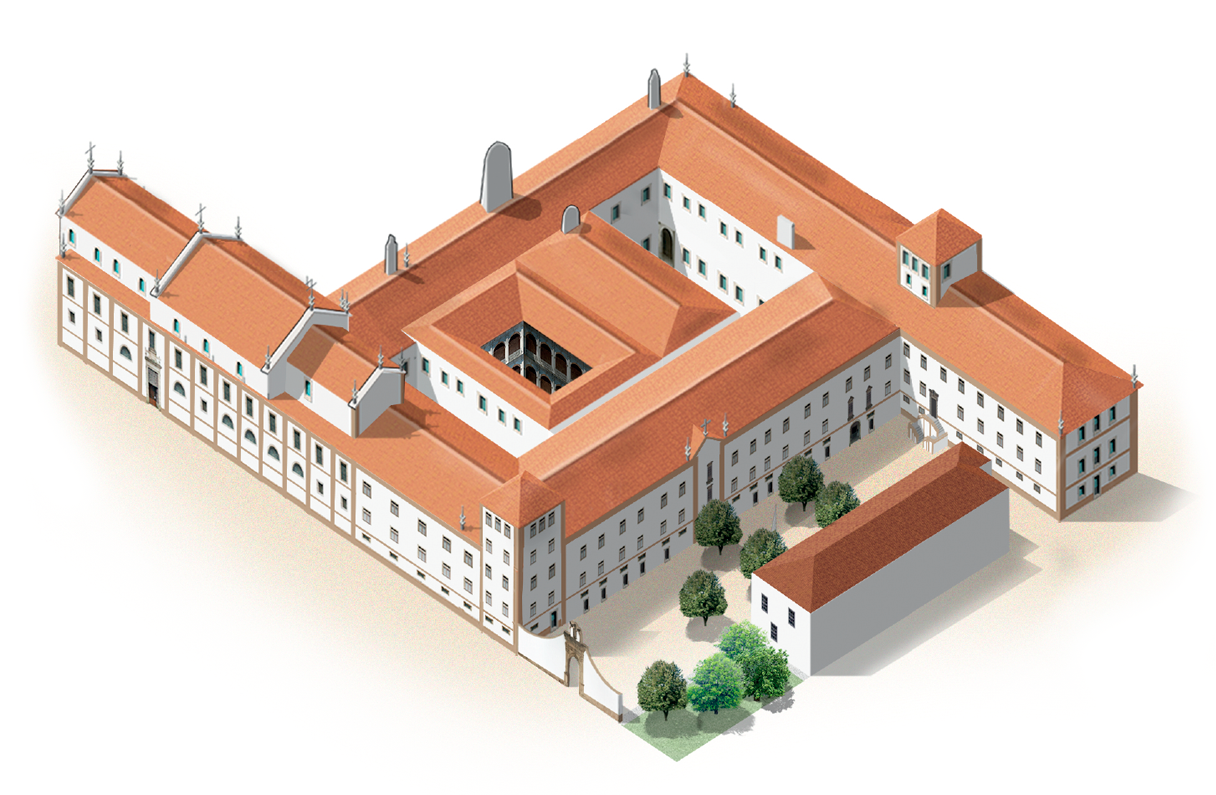
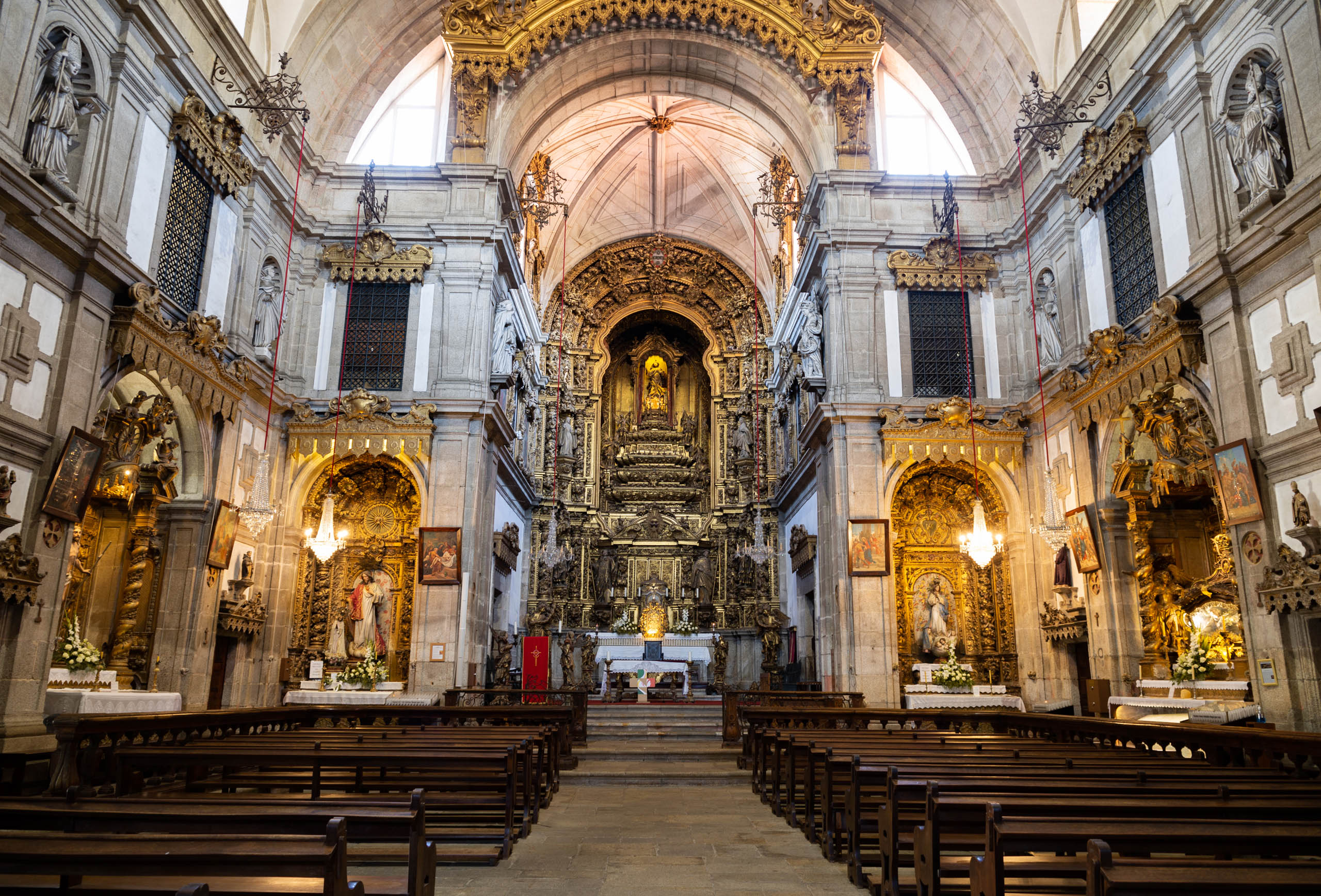
Monastery and Museum of Sacred Art Church
The monastic community of Arouca and the mother house of Alcobaça agreed that it was necessary to rebuild the Church of the Monastery of Arouca. Thus, following the project of the Maltese architect Carlos Gimac, the reformulation of the worship space began (what is now the Parish Church of São Bartolomeu de Arouca and the space of the nuns’ church/chair). Between 1704 and 1730, a bright space took shape, balanced in its colors and shapes, sober in its sculpture and richly decorated with gilded wood carvings, in true Baroque fashion.
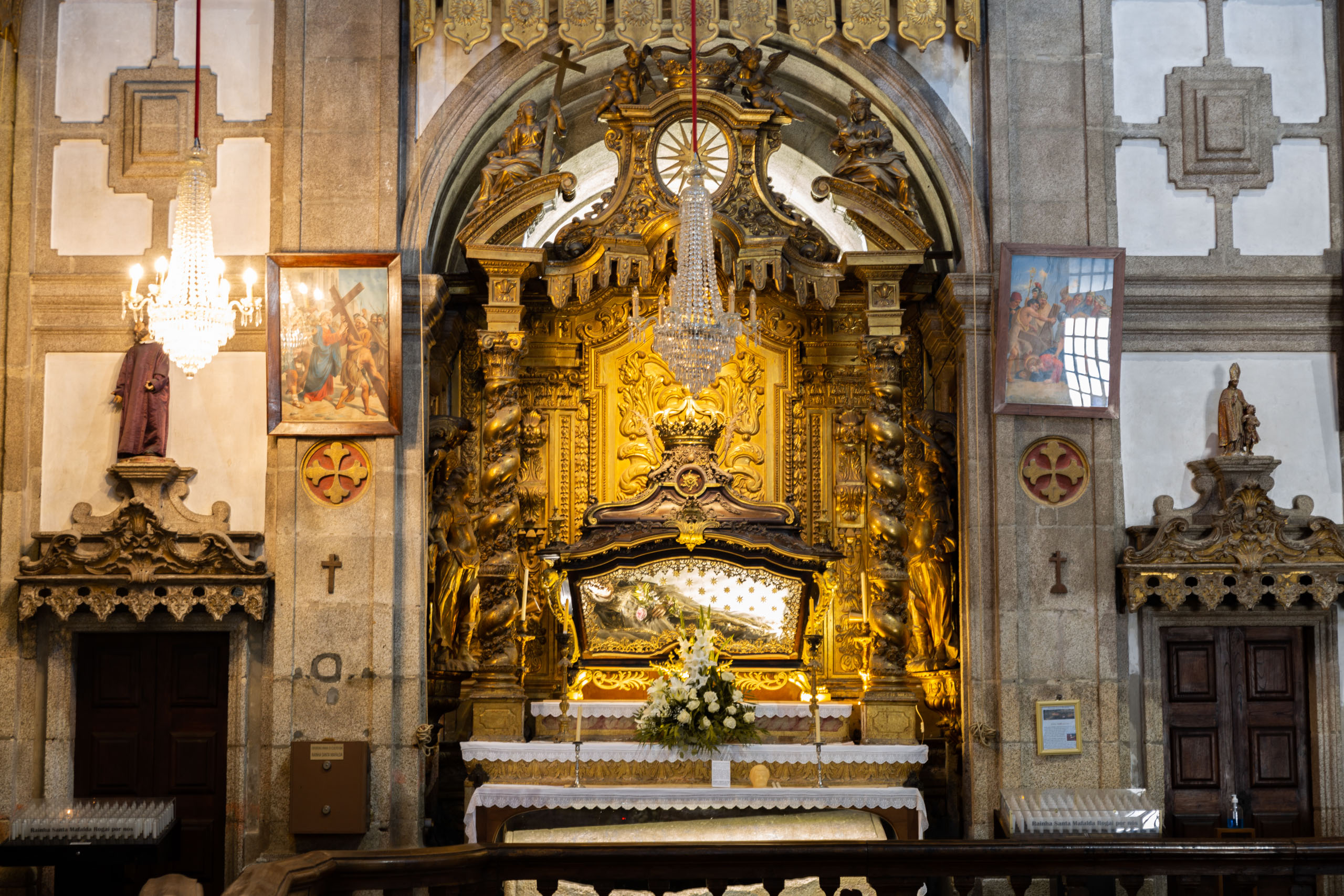
Monastery and Museum of Sacred Art Queen St. Mafalda
Mafalda, daughter of King Sancho I and Dulce of Aragon, arrived in Arouca after an annulled marriage to Henry I of Castile. The marriage, which took place in 1215, was never consummated and ended up being dissolved a year later. Mafalda made it her life’s purpose to manage the Monastery of Arouca, which she owned, making it a reference point and her life an example of holiness. The people recognized her virtues, calling her “Holy Queen” after her beatification in the 17th century. Her remains lie in an ebony and silver reliquary urn in the Monastery Church, and the Royal Brotherhood of Queen Santa Mafalda promotes her cult with festivities on May 2, a municipal holiday.
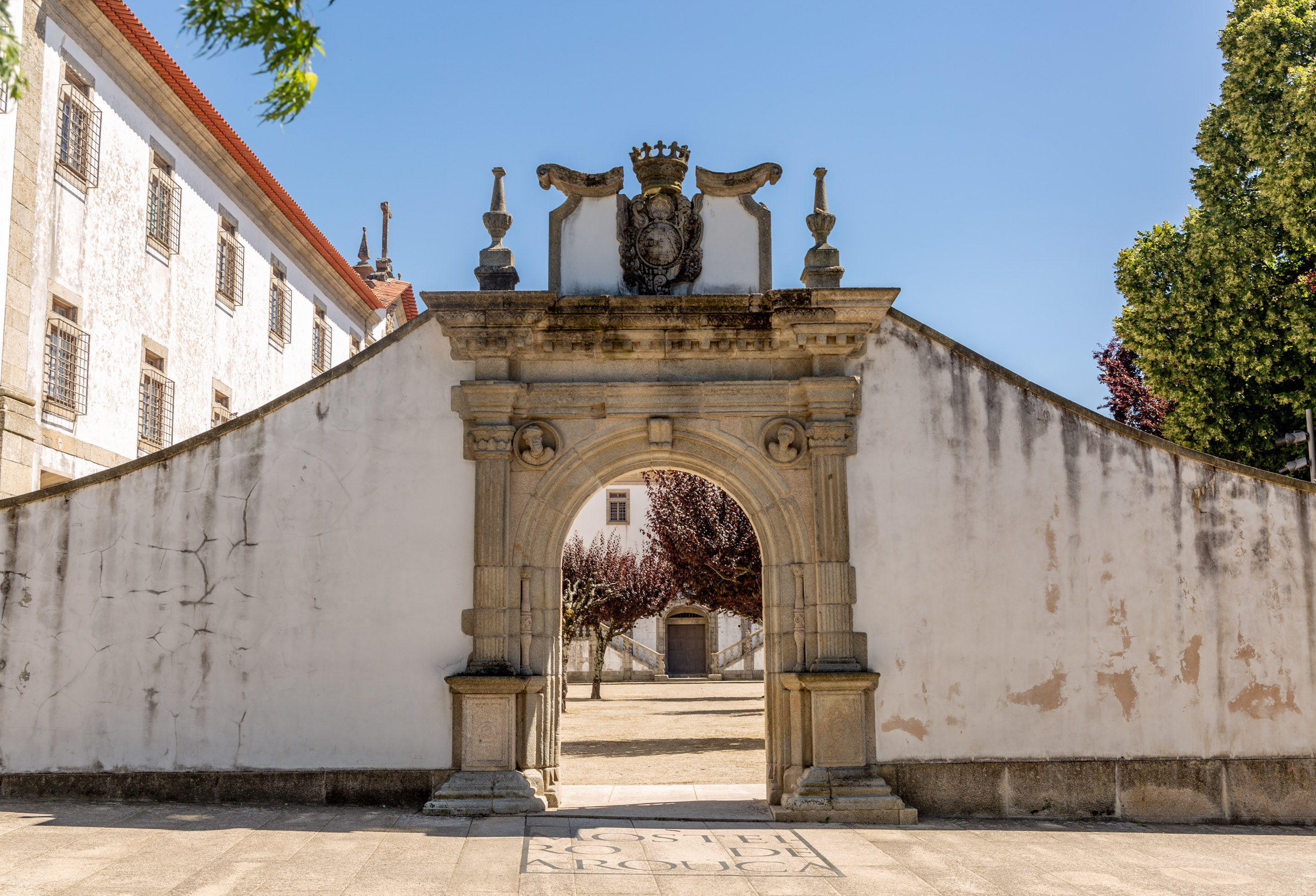
Monastery and Museum of Sacred Art Terreiro Portal
The Portal of the Terreiro de Santa Mafalda has a special symbolism. Rebuilt in 2012, it features elements of 18th century rococo baroque and neoclassical architecture. Sculpted on it are the Cistercian and Portuguese arms, as well as the busts of the noblemen D. Ansur and D. Elva, who were patrons of this “house”.
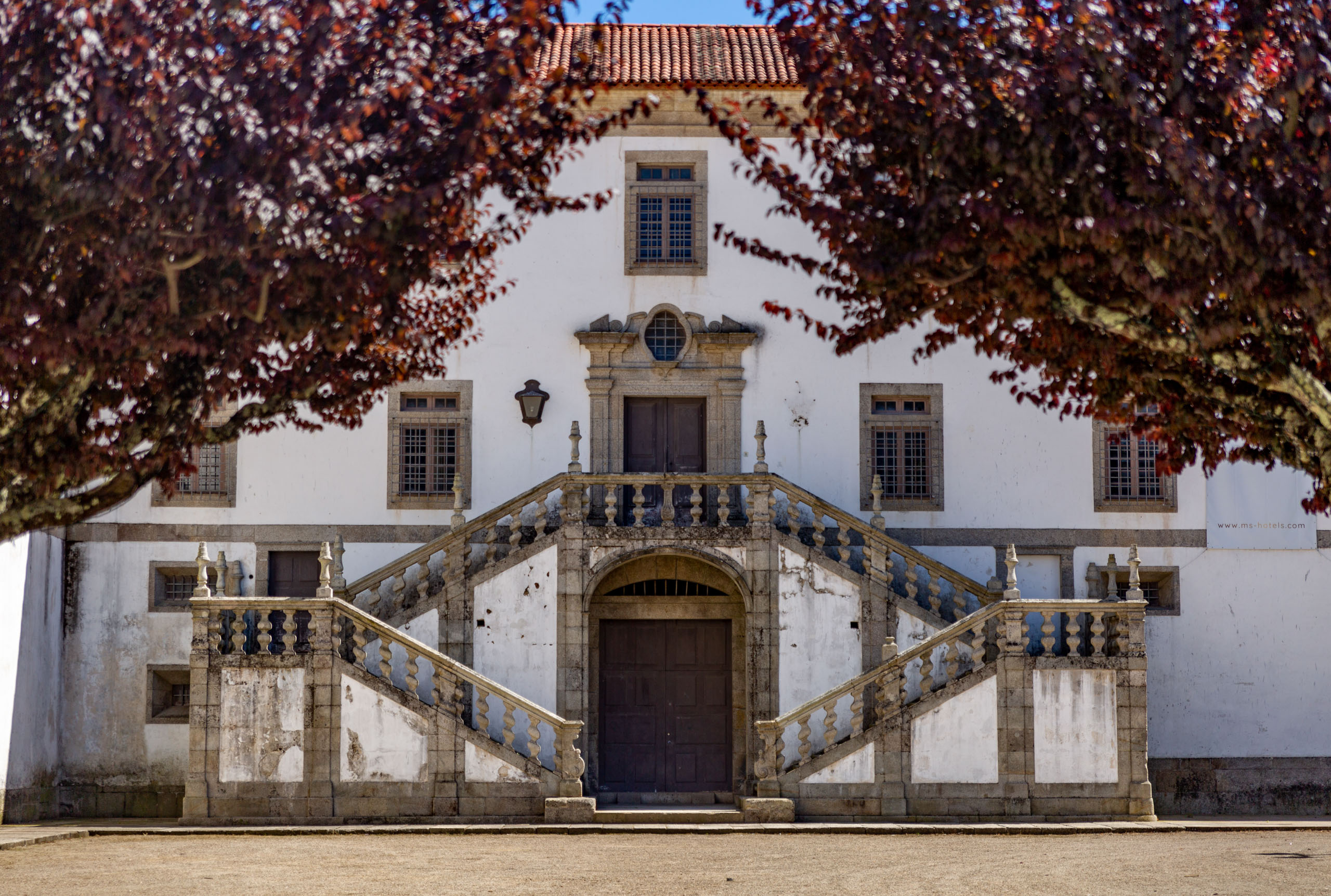
Monastery and Museum of Sacred Art Terreiro de Santa Mafalda
The Terreiro do Mosteiro de Arouca is a kind of antechamber to the entrance to the monastery building, uniting several emblematic spaces. Passing through the portal, on the right is the old Priests’ House; at the bottom, a beautiful staircase that frames the granary building, where the landowners paid their taxes and the poorest collected their alms and some food; on the left, the main entrance to the monastery, punctuated by locutories, where the nuns received some visitors, the abbess’s quarters and two turrets limiting this wing, as if they were keepers’ towers.
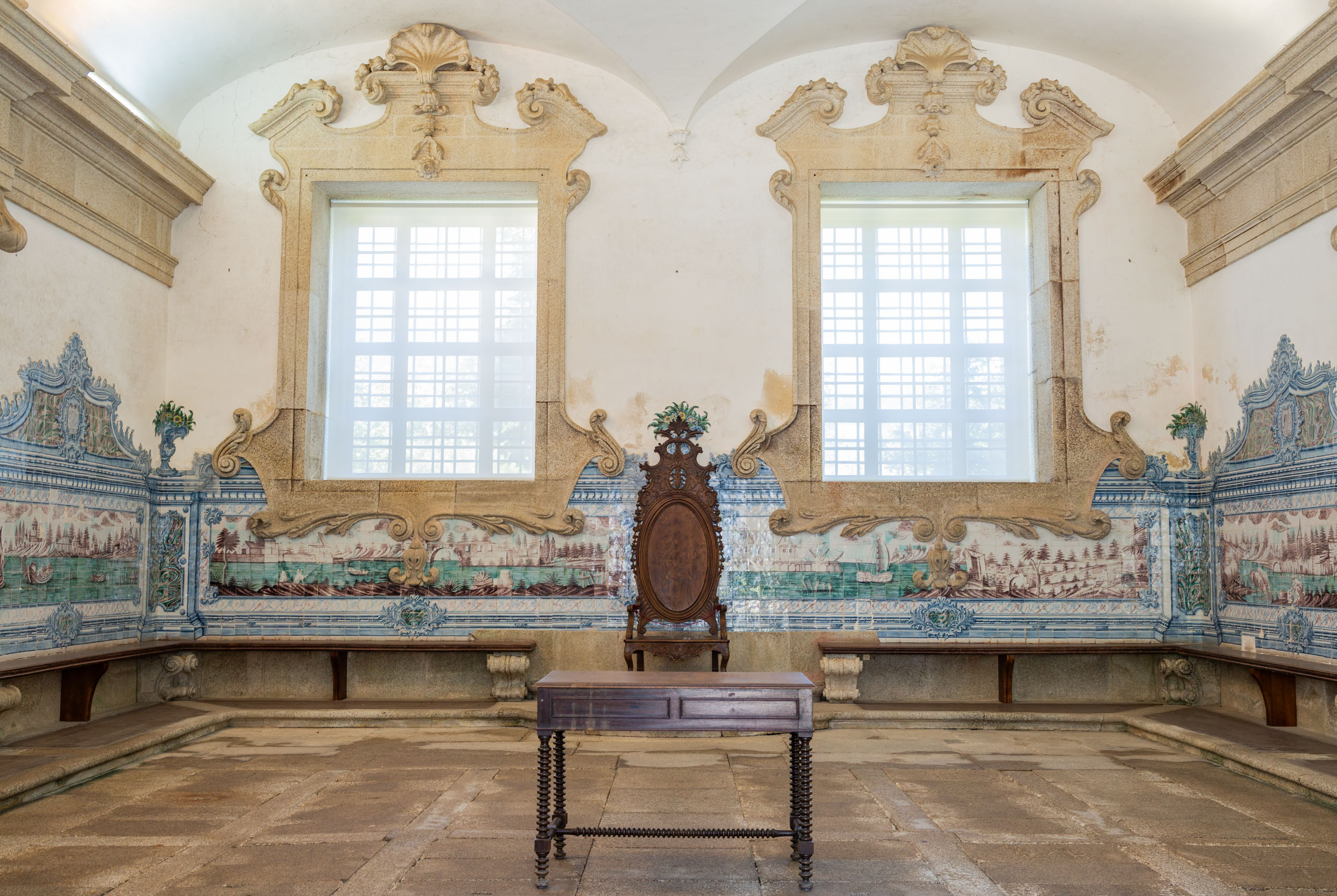
Monastery and Museum of Sacred Art Cloister and Chapter Room
After their death, the nuns were usually buried in the Cloister, where you can still find their numbered tombs. In the Chapter Room, the abbesses were buried. In this same room, the most important meetings of the religious community were held, trials were conducted in a kind of internal court, accounts were given and decisions were made for the future. Today, with an austere and penetrating silence, we can appreciate the beautiful 18th century tiles which, although of unknown origin, may be from the Coimbra School, with portraits of a landscape reminiscent of Flanders and the Netherlands.
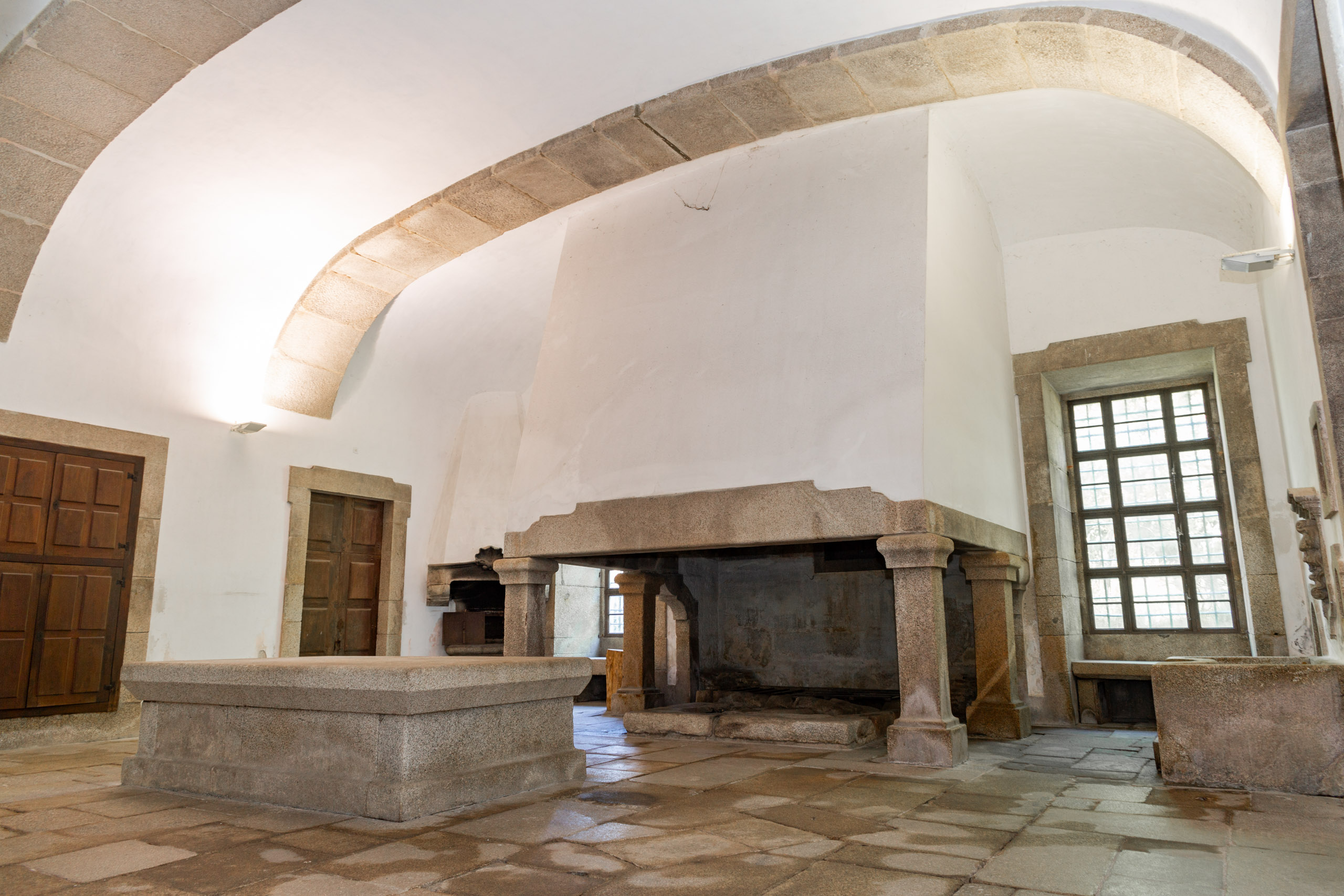
Monastery and Museum of Sacred Art Kitchen
It was here that the nuns created one of the monastery’s best-kept secrets: the recipes for convent sweets. But that’s not all. The size of the kitchen speaks volumes about the dynamics of the community, as we can see from the size of the fireplace, the oven, the central table (made from a single piece of granite) or the chest (made from a single chestnut tree trunk). This is where the ingredients were combined and seasoned, many of which came from the land rents that the monastery administered, and, of course, the eggs which, together with sugar and almonds, are the essential flavours that make Arouca’s monastic sweets a national reference and a true symbol of these lands. You’ll find these secrets in the form of real gastronomic temptations at the Doces Conventuais houses.
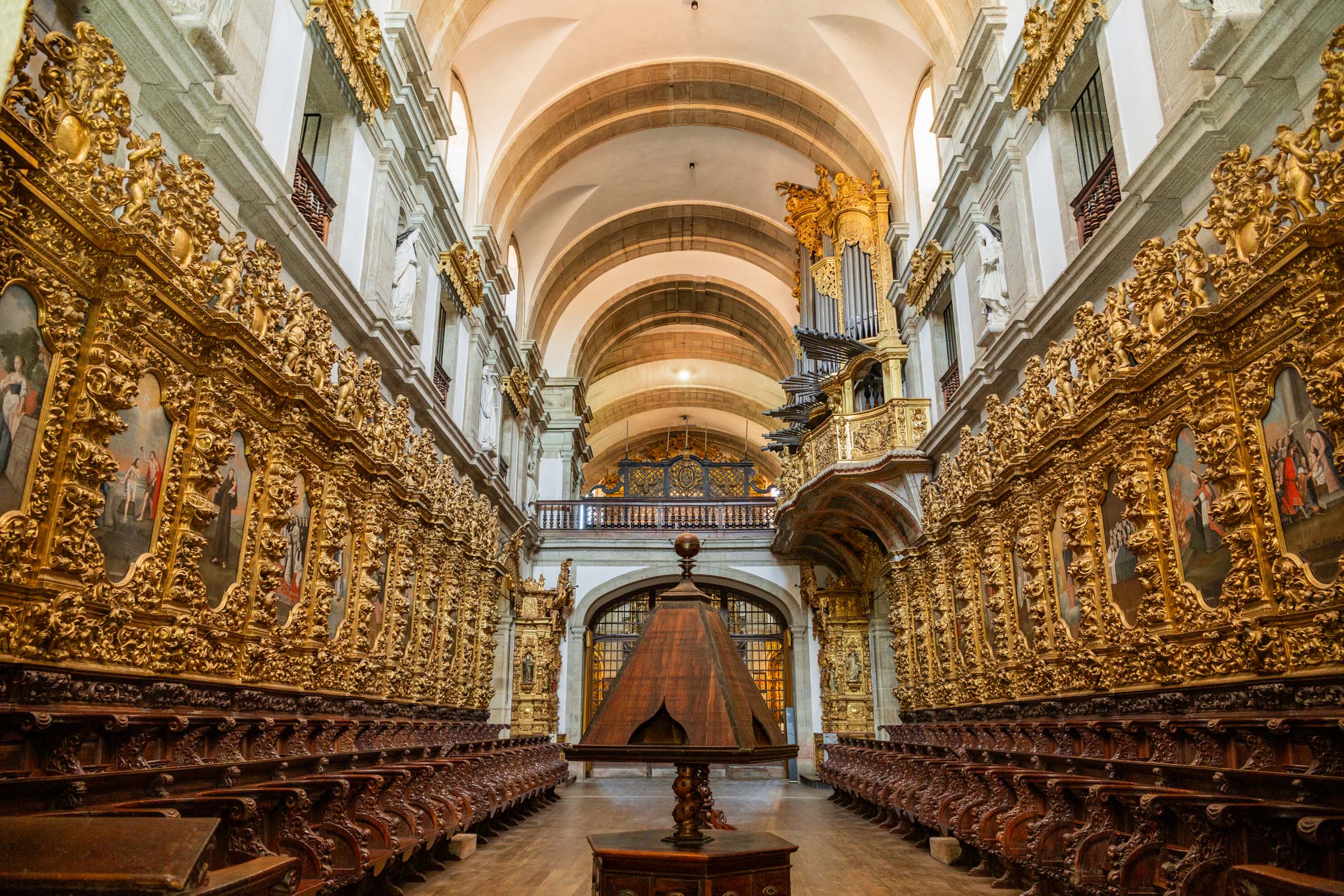
Monastery and Museum of Sacred Art Chair and Organ
The Cadeiral is a space that breathes music, which floods the rosewood chairs, each with a sculpted frown, one of them wearing glasses, waiting to be discovered. Separated from the people by wooden railings, here the nuns attended mass, with their hymn books on these shelves, sitting or in mercy. In the shadow of the monumental organ, with the walls cut out by carving and painting, the Holy Queen continues to preside over the destinies of the Monastery, immortalized in the sculpture by Jacinto Vieira. The organ, built by Manuel Benito Gómez, an organ builder from Valladolid, was given a voice in 1743. It has 1352 pipes, regulated by 24 registers, and is considered by experts to be one of the most important instruments of the Iberian school of organbuilding in the world.
Photos and Videos Gallery
Experience 360º
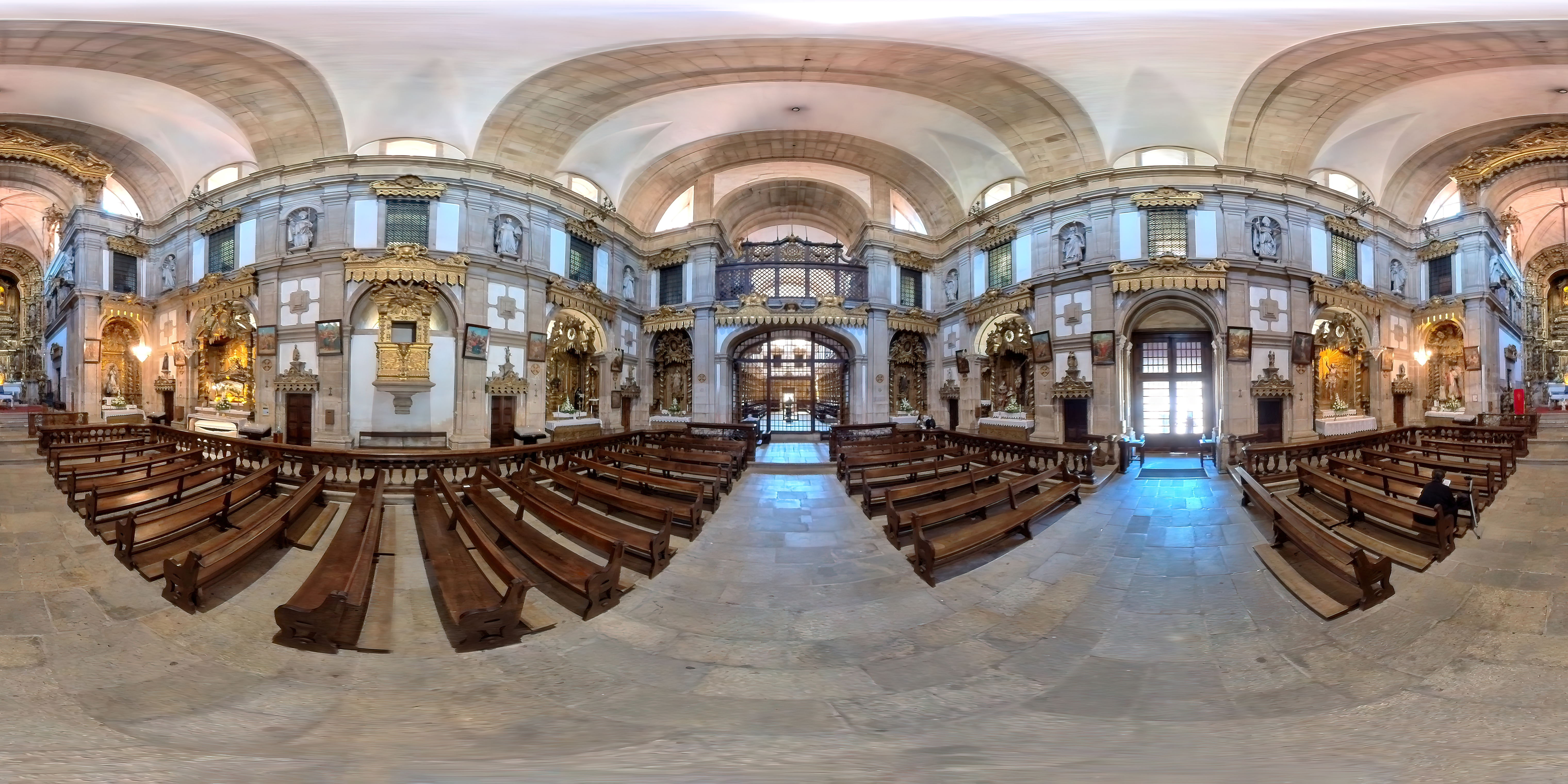


Igreja
